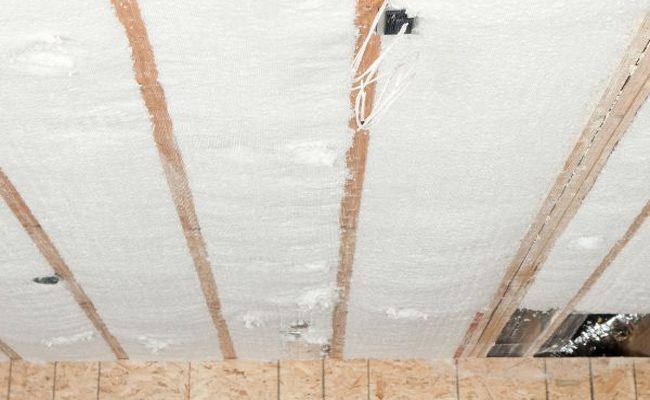
In today’s world, where energy efficiency and sustainability are paramount, homeowners are constantly seeking effective ways to reduce energy consumption and create a comfortable living space. One often overlooked area that plays a significant role in energy efficiency is the attic. By investing in proper attic insulation, homeowners can unlock a multitude of benefits, from lower energy bills to improved indoor comfort.
1. The Significance of Attic Insulation
The attic acts as a thermal barrier between your living space and the external environment. Without proper insulation, heat can easily escape during colder months and infiltrate during warmer seasons. Attic insulation is essential for regulating temperature, reducing heat transfer, and maintaining a comfortable indoor climate. By creating a well-insulated attic, homeowners can significantly improve their energy efficiency and reduce their environmental impact.
2. Types of Attic Insulation
There are various types of insulation materials available, each with its unique characteristics and advantages. The most common types of attic insulation include:
Fiberglass Insulation: Made from fine glass fibers, this cost-effective insulation material is available in batts or loose-fill form. It offers excellent thermal resistance and is relatively easy to install.
Cellulose Insulation: Composed of recycled paper fibers treated with fire-retardant chemicals, cellulose insulation is environmentally friendly and provides effective thermal insulation. It can be blown or sprayed into attics to fill gaps and crevices.
Spray Foam Insulation: This expanding foam insulation forms an airtight seal and offers superior thermal performance. It can be applied as a liquid that expands and hardens, filling every nook and cranny.
Radiant Barrier Insulation: Reflective surfaces that reflect heat instead of absorbing it, radiant barriers are often installed in hot climates. They can be placed on the underside of the roof or rafters to reduce radiant heat gain.
3. The Benefits of Proper Attic Insulation
Investing in attic insulation brings a multitude of benefits to homeowners, including:
Energy Savings: Properly insulated attics minimize heat transfer, reducing the workload on heating and cooling systems. This translates into lower energy consumption and significant cost savings over time.
Enhanced Comfort: Attic insulation helps maintain consistent indoor temperatures, eliminating cold spots in winter and hot spots in summer. This results in a more comfortable living environment year-round.
Reduced Environmental Impact: By conserving energy, attic insulation contributes to reducing greenhouse gas emissions and minimizing the carbon footprint of your home. It is a tangible step towards a more sustainable future.
Noise Reduction: Insulated attics provide an additional barrier against external noise, creating a quieter living space and improving overall tranquility within the home.
4. Professional Installation vs. DIY
While DIY attic insulation can be a viable option for some homeowners, it is crucial to consider the complexity of the task and the potential risks involved. Professional installation offers several advantages, including:
Expertise and Experience: Professional contractors have the necessary knowledge and experience to determine the most appropriate insulation materials and techniques for your specific attic.
Time and Efficiency: Professionals can complete the insulation project more quickly and efficiently, ensuring proper coverage and minimizing any disruption to your daily routine.
Safety: Attic spaces can be challenging to navigate, with potential hazards such as electrical wiring and sharp objects. Professional installers are trained to handle these risks safely.
Long-Term Results: Professional installation ensures that insulation is properly installed and can provide long-lasting energy efficiency benefits.
5. Maintaining Attic Insulation
To maximize the effectiveness of attic insulation over time, homeowners should follow these maintenance tips:
Regular Inspections: Periodically inspect the attic for signs of damage, moisture, or pests that could compromise the insulation. Address any issues promptly to maintain optimal energy efficiency.
Air Sealing: Check for air leaks around vents, electrical outlets, and access points. Properly seal any gaps or cracks to prevent unwanted air infiltration.
Ventilation: Ensure adequate attic ventilation to prevent moisture buildup and condensation. Proper airflow helps maintain the effectiveness of the insulation and prolongs its lifespan.
Upgrading and Adding Insulation: As energy efficiency standards evolve, consider upgrading or adding insulation to meet current recommendations and further improve energy performance.
Conclusion
Attic insulation is a powerful tool for homeowners seeking to enhance energy efficiency, reduce utility bills, and create a comfortable living environment. Learn how to meet the requirements for free loft insulation under the ECO scheme by referring to Warma UK’s comprehensive guide. By understanding the significance of attic insulation, choosing the right materials, and considering professional installation, homeowners can unlock the full potential of their attics and make a positive impact on their finances and the environment. Invest in attic insulation today and reap the benefits of energy efficiency for years to come.
Leave a Reply